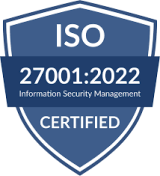Share on:
A wise man once said, “We have so much room for improvement. Every aspect of our lives must then be subjected to an inventory of how we are taking responsibility”. It is important to say that when you don't take inventory, you get out of perspective.
Managing inventory as one’s business grows is a vital factor in scaling businesses, especially small businesses. It is worthy of note that growth for businesses involves expanding the customer base, entering new markets, and acquiring new resources among others.
This is a common objective pursued by all enterprises; however, if not handled properly, it can result in failure despite its positive connotations.
Inventory management is the overall management of a company’s inventory to ensure that there is enough stock for supply to meet customers’ demand while maximizing costs associated with holding and overstocking. It is no news that effective inventory management requires a total understanding of the business in relation to demand and supply as well as sales.
For a business owner, the method and regularity of managing inventory show how prepared you are to manage higher volumes of products and services. For this, there has to be effective inventory management of goods and services to help you determine which of the products are in high demand or seem not marketable in a particular season as this, in turn, helps you to study trends, market demands and make decisions based on the output.
One of the key benefits of using Tyms Book as it relates to inventory management is that it allows businesses to accurately track stock and monitor its movements. This means that businesses can easily determine when to reorder stock and avoid overstocking. With this visibility, small businesses can reduce the likelihood of overstocking products, which can lead to unnecessary expenses and wasted resources. There are several key components of inventory management that help in scaling a business which include the following:
- Inventory Planning: With this, a business owner can determine the demands of customers and by this avoid excess stocking that ties down capital.
- Inventory Replenishment: This helps to ensure that goods are restocked in a timely manner so that they can meet customer’s demands in time.
- Inventory Tracking: This involves keeping accurate records of inventory levels, transactions, and movement throughout the supply chain.
- Inventory Optimization: This level helps to analyze data and make adjustments to ensure maximum efficiency and profitability of the Inventory system.
The first step in inventory management is entering your data. While the manual entry of data can be helpful, fatigue can set in and errors can be made. Adjusting this could become a tedious task in the long run hence the need for Tyms Book, which allows you to import items in your inventory or enter them manually. Here, if mistakes are made, they can be easily corrected and adjustments can be effected automatically.
As opposed to traditional inventory which is prone to errors, the data derived from Tyms Book can be used to make informed decisions about the quantity of products, the order of their importance, and leads from customers. These decisions aim to balance the costs of holding inventory with the costs of ordering and replenishing inventory.
After setting up a system for inventory management, the second step is to conduct regular inventory counts to ensure that the stock in your system matches the actual stock in your warehouse. This will ensure that there are no shortcomings. With this, you can be up to date and not taken by surprise by discrepancies in the business.
The third step is to analyze your sales data. With this, you can identify which product is selling or not. This is needed to know what to be stocked in the business to ensure that cash isn't tied down. At the point of analysis, if some goods are left unsold for a while, it is best to sell them off at a discounted rate so as not to tie up capital.
The fourth step is to replenish your most sold product and ensure that they are not out of reach to your customers. With Tyms Book, vendors and suppliers can be managed effectively to ensure early delivery of sold-out stock. You can effectively reach out to vendors as their contacts are saved and managed on the app.
One of the main uses of inventory is the ability for a business owner to see deeply into the business and accurately project future demands from past records. With inventory management, a business owner can vividly see the strengths to focus on. With that, you can ration your supply to what sells more to yield profit. By following these tips, you can manage your inventory effectively and efficiently and ensure that your small business runs smoothly. This and more can be achieved using Tyms Book.
In a nutshell, effective inventory management can be seemingly difficult but it is a huge help for business owners to see patterns, sales history and to also forecast future demand. A small business owner can benefit from Tyms Book easily as the Bookkeeping app is recommended to set up a system that conducts inventory counts, analyzes sales and manages stock of what is left.
Click the link to get started.


Blessing Obiora
3 mins read


Blessing Obiora
3 mins read



